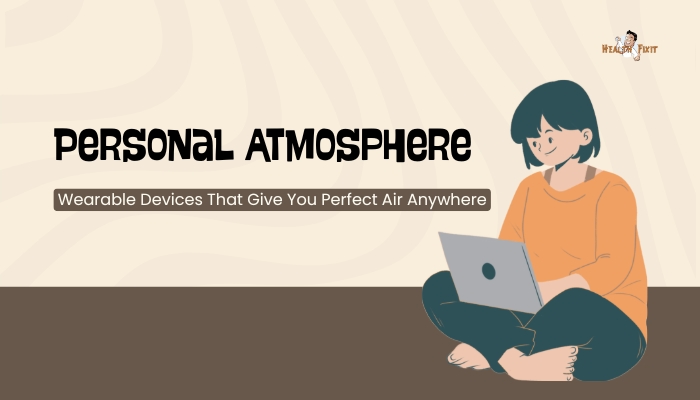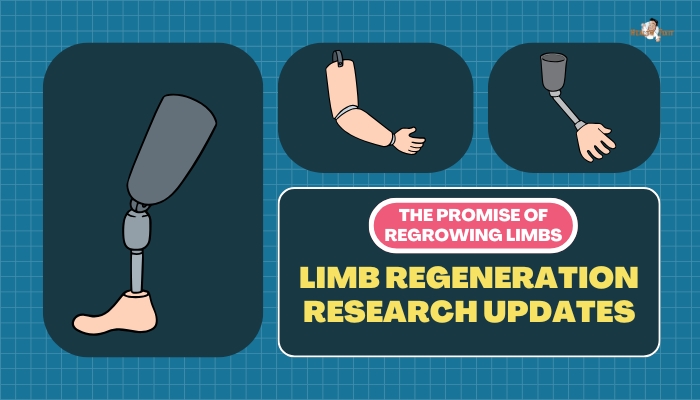Introduction
Picture a device that hovers near your face, continuously providing clean, temperature-controlled air—even on smoggy city streets or during sweltering heat.
This vision of a “personal atmosphere” device combines miniaturized air filtration, thermoregulation, and sometimes AI-based sensors to adapt to your environment in real time. While still emerging,
these technologies promise allergy relief, protection from pollution, and possibly even advanced climate control for each individual—no matter the external weather.
This article delves into the science and feasibility behind personal atmosphere wearables, the potential benefits for public health, and the challenges to making them widely accessible.
The Need for Personal Atmosphere Tech
Rising Pollution and Allergies
Urban areas often suffer from PM2.5 particulates, vehicle emissions, and allergens like pollen, causing respiratory issues. Face masks help,
but they’re not always comfortable for long durations—and can’t change the humidity or temperature. A personal atmosphere solution goes further, purifying incoming air consistently.
Extreme Heat and Climate Stress
Increasingly frequent heatwaves can pose health risks, especially for older adults or those with certain medical conditions. Wearable cooling devices might keep your immediate environment a few degrees cooler, helping stave off heat-related illnesses.
Indoor Air Quality Concerns
Even indoors, stale or allergen-laden air (mold, dust) can trigger discomfort. A personal “bubble” of cleansed air ensures consistent air quality, regardless of building ventilation—beneficial in shared offices or under-ventilated rooms.
How Personal Atmosphere Devices Work
Miniature Air Filtration
Some prototypes rely on tiny fans and filters (HEPA or activated carbon) to draw in ambient air, trap pollutants, and deliver purified air near the wearer’s nose and mouth.
Designs vary: from “necklace” shapes to discrete shoulder- or collar-mounted units. The challenge: balancing airflow, noise, battery, and size.
Smart Sensors
Built-in particulate or gas sensors measure local air quality. The system automatically adjusts fan speed or triggers deeper filtration modes when it detects spikes in dust,
pollen, or chemicals. Some also incorporate real-time data from weather or pollution apps to anticipate hazardous conditions.
Temperature and Humidity Control
Advanced concepts incorporate thermoelectric cooling or a micro-humidifier to tweak the microclimate around your face. By channeling cooled or slightly moistened air, these devices aim to keep you comfortable in scorching or dry conditions—like a personal micro-AC.
Potential Benefits
Health Protection
For people with asthma, COPD, or severe allergies, portable filtration is a game-changer—offering consistent relief from triggers. Even healthy users can reduce inhalation of urban smog or cigarette smoke in congested areas.
Comfort in Extreme Climates
Outdoor workers, travelers, or festival-goers in hot, humid zones might appreciate personal cooling. Similarly, in cold, dry climates, an integrated warmer/humidifier helps prevent dryness or chills.
Minimal Social/Environmental Disruption
Unlike large building AC systems or air purifiers that consume more energy and must treat entire spaces, a targeted personal device uses less energy, focusing solely on your immediate breathing zone.
Challenges and Limitations
Power and Battery Life
Running fans, filters, or cooling elements continuously demands energy. Current battery tech might limit usage to a few hours. More efficient motors or advanced energy storage is needed for a truly all-day wearable solution.
Bulk and Noise
Packing filtration, electronics, and fans in a compact, comfortable wearable is tough. Early prototypes can be somewhat bulky or produce noticeable noise. Achieving stylish form factors with minimal hum is an engineering puzzle.
Efficacy vs. Full Solutions
Even a personal bubble can’t remove all pollutants if the environment is extremely polluted.
Some pollutants (like carbon monoxide) or viruses might require more advanced solutions (like integrated UV sterilization)
. The best approach might combine personal devices with broader environmental measures.
Next-Gen Innovations
Neckband and Face Shield Hybrids
Some emerging designs integrate a gentle face shield or visor, ensuring purified air stays near your nose/mouth. This approach addresses crosswinds or motion. Light, see-through shields might combine eye protection for allergens or desert dust storms.
Smart Connectivity and AI
AI-driven devices could link with local weather/air quality indexes. By anticipating spikes in pollution or allergen levels, they might preemptively ramp up filtration. They might also remind users to replace filters or recharge batteries.
Integration with Wearable Ecosystems
As wearable adoption grows—smartwatches, AR glasses—these atmospheric devices could integrate seamlessly, exchanging data about steps
, heart rate, or sweat signals. This synergy might create a holistic personal environment system, from microclimate control to health monitoring.
Balancing Practicality and Appeal
Consumer Acceptability
While many accept face masks post-pandemic, will large personal air systems be socially comfortable to wear? Designers must ensure devices are discreet, aesthetic, and user-friendly to gain mainstream acceptance.
Cost and Market Accessibility
Early versions might be pricy, limiting adoption to wealthier or tech-savvy consumers. Over time, improved manufacturing and competitive innovation can drive down costs—key for adoption in high-pollution developing regions where need might be greatest.
Environmental Footprint
Ironically, if billions adopt personal micro-AC or air filtration, energy usage might spike. Engineers must optimize for energy efficiency, possibly exploring solar-charging or advanced battery materials to keep the net ecological footprint reasonable.
Future Outlook
Personalized Micro-Climate Control
Eventually, the boundary between personal air devices and clothing might blur—jackets or scarves with built-in filtration/cooling. By 2030 or beyond, we may see widely available, comfortable personal atmosphere garments that adapt minute-to-minute to external conditions.
Public Health Gains
If widely deployed, especially in mega-cities with severe smog or extreme heat, personal atmosphere tech could reduce respiratory ailments and hospital admissions
, offsetting healthcare costs. Coupled with broader environmental policies, these devices could be part of a multi-pronged approach to human health resilience.
[H3] Not a Replacement for Systemic Solutions
While personal devices help individuals, systemic solutions—clean energy, better city design—remain crucial to tackle underlying pollution or climate change. Personal atmosphere wearables should complement, not replace, collective efforts to improve the environment.
Practical Tips for Potential Users
- Check Filter Ratings: If considering a device, look for known standards (like HEPA or MERV). Evaluate the filtration targets: PM2.5, pollen, etc.
- Assess Power Requirements: Ensure the battery life meets your daily usage needs. Some models might allow external battery packs or quick-charging.
- Comfort and Ergonomics: Prioritize wearability—test weight, noise level, how it fits around the neck or face. A comfortable device encourages consistent use.
- Cost-Benefit: Factor in filter replacement frequency and maintenance costs. Real-time app-based data might justify the investment if pollution or allergies severely affect you.
Conclusion
Personal atmosphere technology—ranging from wearable air purifiers to microclimate devices—offers a glimpse into a future where the air we breathe is tailor-made to suit our health and comfort.
Driven by miniaturized filters, advanced sensors, and battery innovations, these devices promise relief from pollution
, allergens, and extreme temperatures. But broad adoption depends on design improvements, cost reductions, and ensuring their net environmental impact remains sustainable.
As these solutions evolve, they can empower individuals in polluted urban environments or in scorching climates—giving each of us the ability to carry a pocket of fresh air wherever life takes us.
References
- Chen C, Zhao B. Review of relationship between indoor and outdoor particles: I/O ratio, infiltration factor and penetration factor. Atmos Environ. 2011;45(2):275–288.
- Morawska L, et al. The technology of personal air cleaners: a scoping review. Build Environ. 2022;212:108860.
- Nowacki T, Baur D. Wearable air filtration: design, function, and user acceptance. Innov IEEE. 2021;10(4):46–52.
- Padilla RV, et al. Personal microclimate cooling devices: potential roles in future climate resilience. Environ Res Lett. 2020;15(10):103006.
- Kim JK, et al. The role of personal air-cleaning technology in mitigating health impacts of PM2.5. Curr Pollut Rep. 2021;7(2):153–167.
- Chandrasekaran B, Tam P, Freedman M. Battery limitations and novel solutions for wearable devices. Renew Sust Energ Rev. 2021;151:111538.
- Henschel S, Chan G, Kunzli N. Individual-level interventions for PM pollution: feasibility of personal filtration. Eur Heart J. 2020;41(Suppl 2):ehaa946.
- Gao N, Niu JL. Occupant-driven ventilation strategies for personal comfort. Build Environ. 2018;132:281–294.
- Chen D, et al. Smart textile solutions for personal environment management. ACS Nano. 2021;15(7):10724–10736.
- Leung M, et al. Reducing high temperature stress in the city using personal cooling devices. Urban Clim. 2022;40:101001.




